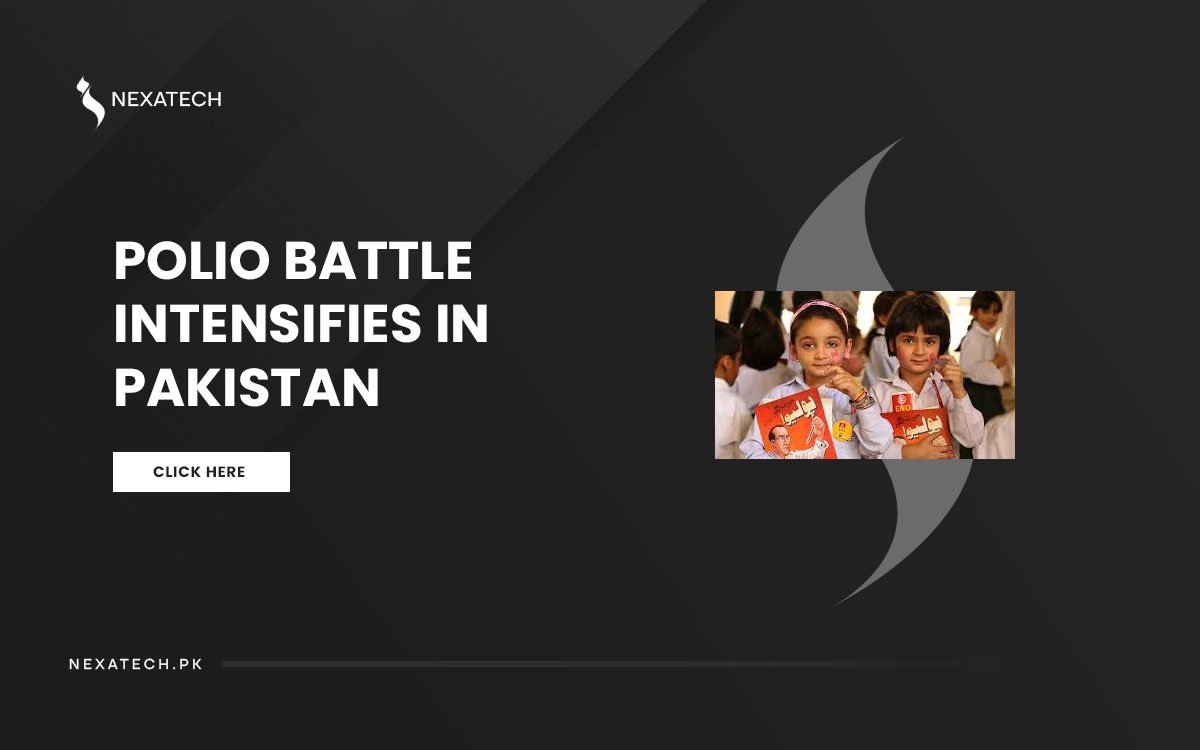Three decades into the fight against polio, the wild poliovirus (WPV) still threatens Pakistani children. This year alone, 39 children have been affected, and over 400 sewage samples across 71 districts have detected the virus. The polio battle intensifies in Pakistan as the circulation of the virus poses a severe risk to children nationwide.
Polio Battle Intensifies in Pakistan
Pakistan’s journey towards eradicating polio has been long and difficult. The country nearly achieved victory several times, including in 2017 with only eight cases and again in 2021 when just one child was affected. For 15 months during 2021-22, there were no cases, and hopes for eradication were high. However, the virus survived, leading to a local outbreak in southern Khyber Pakhtunkhwa in 2022.
The current surge began in the latter half of 2023. It was linked to a virus cluster that re-entered from Afghanistan. As the polio battle intensifies in Pakistan, the virus spread to Karachi, Quetta, and Peshawar-Khyber, the main hubs of transmission.
Factors Behind the Resurgence
Several factors contributed to the resurgence. The polio program shifted its focus to southern Khyber Pakhtunkhwa while neglecting other areas. This shift led to poor supervision and inconsistent vaccination campaigns in many regions. As a result, many children were missed, and fake vaccinations were reported.
Complacency also played a role. Low routine immunisation rates, especially in high-risk areas like southern Khyber Pakhtunkhwa and Balochistan, left many children vulnerable. Persistent vaccine refusals and community resistance allowed the virus to spread further. With the polio battle intensifying in Pakistan, these weaknesses need urgent addressing.
Renewed Efforts to Eradicate Polio
The government has taken significant steps to regain control. Prime Minister Shehbaz Sharif is personally overseeing the eradication efforts, with a senior officer leading the National Emergency Operations Centre (NEOC). They conducted a forensic analysis to understand the factors behind the virus’s spread.
They introduced a new plan called the 2-4-6 roadmap and finalized the National Emergency Action Plan 2024-25 (NEAP). The polio battle intensifies in Pakistan as this comprehensive plan aims to vaccinate all vulnerable children repeatedly. It also involves partnerships to address water, sanitation, hygiene (WASH), and malnutrition issues.
Strengthening the Polio Program
In July and August, they revamped the polio program to identify and fix gaps. The second phase began in September with a large-scale vaccination campaign covering over 33 million children across 115 districts. The aim is to conduct two more high-quality campaigns by the end of December.
The polio program is also working closely with Afghanistan to ensure simultaneous vaccination efforts. By January, the focus will shift to mapping remaining virus hotspots and enhancing vaccination coverage. The goal is to interrupt transmission by mid-2025.
Remembering Polio Heroes
As the polio battle intensifies in Pakistan, it’s essential to acknowledge the dedication of frontline workers. Many of these heroes are women who face challenging conditions and security risks. Their efforts are crucial in protecting the future generations.
World Polio Day on October 24 serves as a reminder of the ongoing fight. This year’s observance coincides with a nationwide campaign targeting 45 million children. With the virus still present, no child is safe until every child is vaccinated.
Call to Action
A polio-free future is the right of all Pakistani children. As the polio battle intensifies in Pakistan, society must join hands to ensure that every child is protected against this crippling disease.
